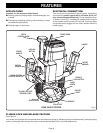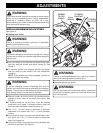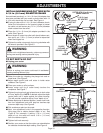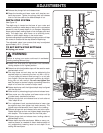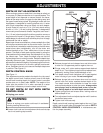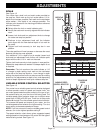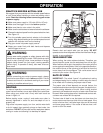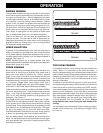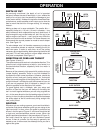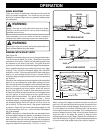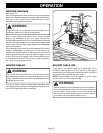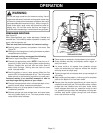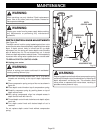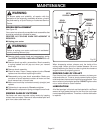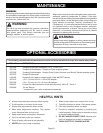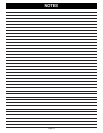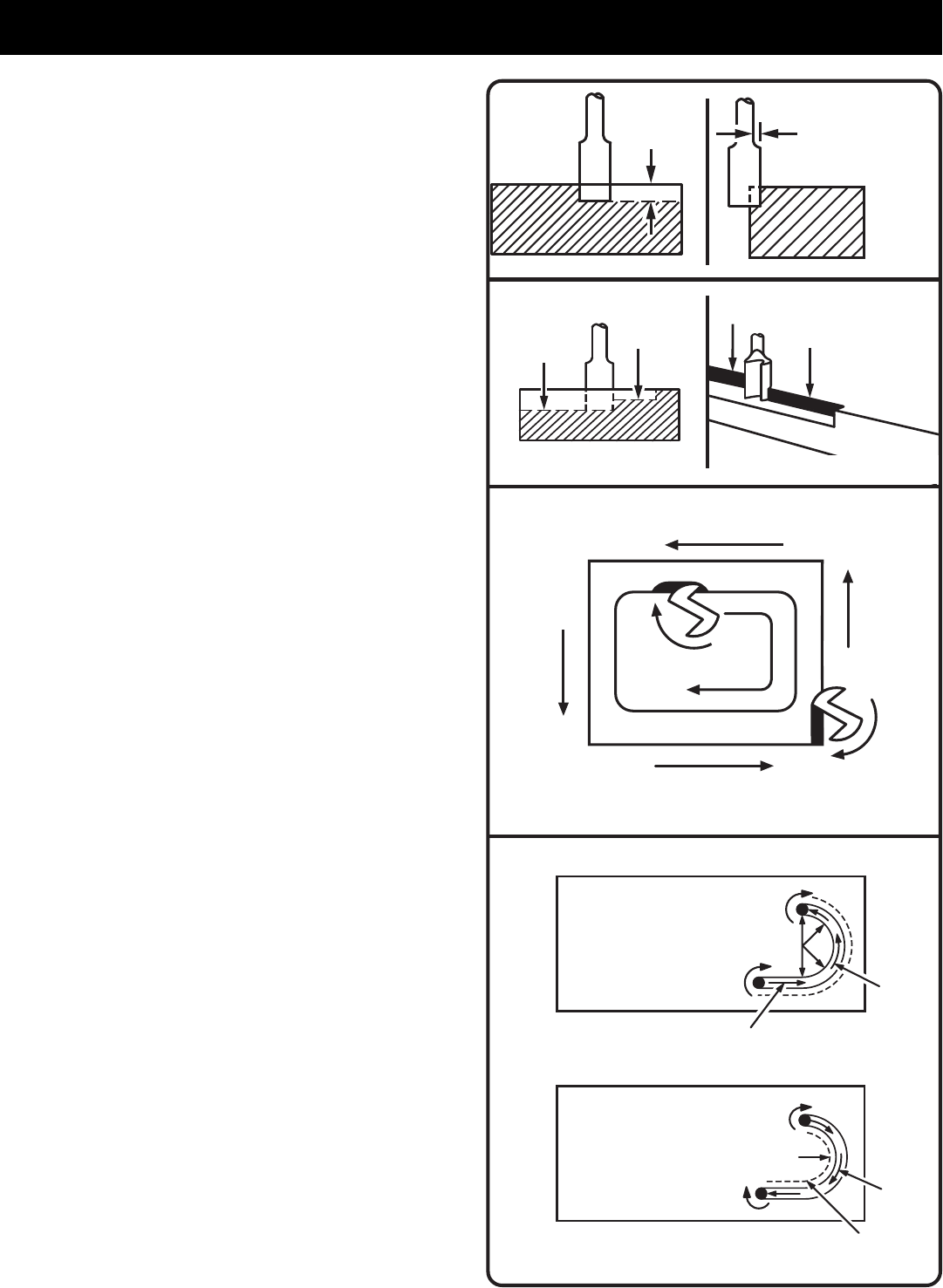
Page 16
Fig. 19
OPERATION
DEPTH OF CUT
As previously mentioned, the depth of cut is important
because it affects the rate of feed which, in turn, affects the
quality of a cut (and, also, the possibility of damage to your
router motor and bit). A deep cut requires a slower feed than
a shallow one, and a too deep cut will cause you to slow the
feed so much that the bit is no longer cutting, it is scraping,
instead .
Making a deep cut is never advisable. The smaller bits —
especially those only 1/16 inch (1.6 mm) in diameter — are
easily broken off when subjected to too much side thrust. A
large enough bit may not be broken off, but if the cut is too
deep a rough cut will result — and it may be very difficult to
guide and control the bit as desired. For these reasons, we
recommend that several passes be made to reach deeper
cuts.
See Figure 16.
To make deeper cuts it is therefore necessary to make as
many successive passes as required, lowering the bit for
each new pass. In order to save time, do all the cutting
necessary at one depth setting, before lowering the bit for the
next pass. This will also assure a uniform depth when the
final pass is completed.
See Figure 17.
DIRECTION OF FEED AND THRUST
See Figures 18 and 19.
The router motor and bit revolve in a clockwise direction. This
gives the tool a slight tendency to twist (in your hands) in a
counterclockwise direction, especially when the motor is
starting up.
Because of the extremely high speed of bit rotation during a
“proper feeding” operation, there is very little kickback to
contend with under normal conditions. However, should the
bit strike a knot, hard grain, foreign object, etc. that would
affect the normal progress of the cutting action, there will be
a slight kickback—sufficient to spoil the trueness of your cut
if you are not prepared. Such a kickback is always in the
direction opposite to the direction of bit rotation.
To guard against such a kickback, plan your setup and
direction of feed so that you will always be thrusting the
tool—to hold it against whatever you are using to guide the
cut—in the same direction that the leading edge of the bit is
moving. In short, the thrust should be in a direction that keeps
the sharp edges of the bit continuously biting straight into
new (uncut) wood.
ROUTING
Whenever you are routing a groove, your travel should be in
a direction that places whatever guide you are using at the
right-hand side. In short, when the guide is positioned as
shown in the first part of Figure 19, tool travel should be left
to right and counterclockwise around curves. When the
guide is positioned as shown in the second part of Figure 19,
tool travel should be right to left and clockwise around
curves. If there is a choice, the first setup is generally the
easiest to use. In either case, the sideways thrust you use is
against the guide.
THRUST
FEED
GUIDE
GUIDE INSIDE
GUIDE OUTSIDE
GUIDE
ROTATION
ROTATION
ROUTER FEED
DIRECTION
BIT
ROTATION
ROUTER FEED
DIRECTION
ROUTER FEED
DIRECTION
ROUT END
GRAINS FIRST
BIT
ROTATION
Fig. 18
Fig. 16
WIDTH
OF CUT
DEPTH
OF CUT
2ND.
PASS
1ST.
PASS
2ND. PASS
1ST. PASS
THRUST
Fig. 17
FEED



